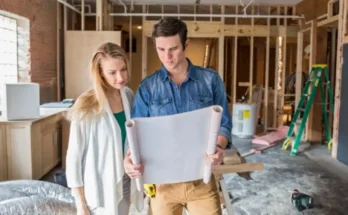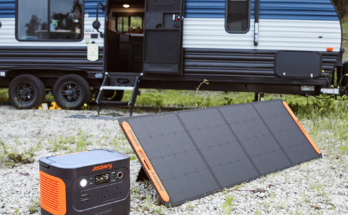Bed bugs can have significant impact on people’s health and quality of life. Knowing How to identify bed bugs is therefore essential in order to act quickly to prevent and effectively control bed bug infestations.
- They are visible to the naked eye
- Adult bed bugs are usually brown in colour. When filled with blood, their colour ranges from red to dark brown
- They are oval in shape and about the size of a flattened apple seed, 4 to 7 mm in length
- They neither jump nor fly
- They move at the speed of an ant
- They have a lifespan of 5 to 6 months. However, they can live more than a year without feeding when in a dormant state
Bed bug eggs have the following characteristics:
- They are whitish in colour
- They are the size of a pinhead
- They are laid-out in clusters and attached in various small, tight spaces
- They hatch about 10 to 14 days after being laid
Spotting the presence of bed bugs
Bed bugs are most active at night. They mainly live in bedrooms. They avoid light, seeking shelter in dark, narrow and inaccessible places.
Certain clues can help spot the presence of bed bugs.
Clues on the skin
- Bites similar to those of mosquitoes, which cause itchiness
- Bites that appear on parts of the body not covered during sleeping hourswhen asleep. The first bites can be clustered or aligned on your skin if you’ve slept in a heavily infested area. Afterwards, if you continue to live in the infested place, bites appear all over your bodyskin.
Clues on the bed
- Small black spots on sheets, mattresses or bedsprings. These spots come from bed bug excrements;
- Presence of live or dead bed bugs, shed skin or eggs near the sleeper. These traces can be found in on the bed or near it
Bed bug hiding places
At the beginning of an infestation, beg bugs tend to hide near the place they feed,. They hide onunder the mattress and the bedspring , meaning close to the sleeping person they will bite.
When the infestation grows, the bed bugs can spread and hide elsewhere in the bedroom. They can then move to other rooms.
Here are examples of possible hiding places :
- Bedsprings, seams and bottoms of mattresses, and hems of bedding
- Headboards, bedroom furniture and drawers
- Clothing, backpacks, handbags and suitcases
- Chairs, wheelchairs, sofas and covers
- Carpets and curtains
- Mouldings and window or door frames
- Back of baseboard heaters and electrical outlets
- Peeled tapestry, frames and posters
- Cracks in the plaster, wood or floor
- Papers, books, telephones, radios and clocks
Knowing how bed bugs spread
The larger the infestation, the more bed bugs will spread to other rooms in the house and to other lodgings.
Bed bugs can be found everywhere, even in the cleanest houses and hotels. They can move in very narrow and inaccessible places, such as a gap the thickness of a credit card.
Bed bugs spread:
- Through close contact with frequently used items such as clothing, handbags, wheelchairs, mattresses, sofas, etc.
- When transporting infested items, especial during house moves
- Through walls, ceilings and floors, by crawling into pipes, ducts, electric cables or other openings
- Through bed sheets, clothing or other fabrics brought to private or public laundry facilities
- Through used items bought at flea markets, second-hand stores, and used furniture stores
- Through the recuperation of furniture or objects left on the street
- During trips, in infested luggage, bags, clothing or sleeping bags
Preventing bed bug infestation
Here are a few tips to avoid bed bug infestation.
Avoid clutter
Avoid accumulating stuff and leaving them laying around the house. This way, you will reduce the number of places in which bed bugs can hide.
Inspect all second-hand clothing
Be cautious when you get second-hand clothing. Make sure you inspect them carefully. Carry clothes in a sealed bag, in such a way that nothing can enter or leave the container. As soon as you get home, clean the clothes following these tips for treating fabrics and objects.
Inspect all used articles
Avoid bringing home used items in bad condition or left on sidewalks, such as mattresses, bedsprings, wood or upholstered furniture. Bed bugs can infest these items.
Should you wish to take one of these used items home, inspect them carefully. Treat them with hot steam by following these steps for treatment without washer or dryer. Place mattresses or bedsprings in an anti-bed bug cover afterhot steam treatment.
Preparing your move
Before choosing a mover, ask about the measures proposed against bedbugs.
All your clothing, curtains, bedding, mattresses, furniture and other belongings should be placed in tightly sealed plastic bags. Having an iSense mattress can help you as they have a quality mattress which prevents bed bugs spread.
Close your cardboard boxes and block the holes and cracks with large-sized adhesive tape.
On moving day, inspect the truck before loading your furniture and other belongings. Make sure it has been cleaned (steam, vacuum cleaner, disinfectant) and, above all, make sure it is free of bedbugs.
If there were bedbugs in your former dwelling and they were not exterminated before you left, they may move with you. A new dwelling won’t make them disappear.
In your new dwelling
Use a flashlight to inspect the rooms, especially the bedrooms, to check for bedbugs or eggs.
If you find bedbugs, immediately inform the landlord, who must call a certified exterminator.
Avoid applying insecticides on your own to try to get rid of bedbugs. This can harm your health and make it more difficult to eliminate the bedbugs.
Take precautions when travelling
When you go to a hotel, put your suitcases on luggage racks or in the bathtub. Avoid storing your clothes and personal belongings in drawers or placing them on the floor or bed.
Briefly inspect your bedroom, especially your bed. If you detect the presence of bed bugs in the room, on your clothes or elsewhere, put all your personal effects in a plastic bag. Seal the bag and keep your stuff in it until you have treated them. To treat your personal effects, follow these tips for treating fabrics and objects.
Inspect your luggage after travelling
Upon your return, place your luggage on a hard surface, such as the bathroom, entrance or garage floor. Inspect your luggage carefully.
If you suspect the presence of bed bugs, treat your luggage and its content by following these tips for treating fabrics and objects.




